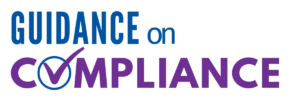Health Insurance Prospective Payment System rate codes, known as HIPPS codes, represent specific sets of patient characteristics (or case-mix groups) on which payment determinations are made under several prospective payment systems (PPS). These HIPPS codes are reported on claims to insurers.
The language of the Patient Driven Payment Model (PDPM) HIPPS coding is complex. The HIPPS code is only five digits however there are many combinations of those digits under PDPM. Once you understand what each digit represents, you can glean a lot of information from those five digits. It is important to understand the “language” of the HIPPS code under PDPM in order to look for trends that might indicate under or over coding. The foundation is to learn what each of the digits represents.
The first character represents both the PT and OT Case Mix Group (CMG). The second character represent the SLP CMG. The third digit correlates to the Nursing CMG. The fourth represents the non-therapy ancillary (NTA) CMG. The fifth character represents the Assessment or AI code. Because the CMG codes are more than one digit, CMS has created tables to take the CMG to the HIPPS coding. These tables are presented below and are contained in the original CMS PDPM presentation which can be found, starting on page 79.
PT/OT, SLP and NTA HIPPS CHARACTER CROSSWALK
| PT/OT Payment Group | SLP Payment Group | NTA Payment Group | HIPPS Character |
| TA | SA | NA | A |
| TB | SB | NB | B |
| TC | SC | NC | C |
| TS | SD | ND | D |
| TE | SE | NE | E |
| TF | SF | NF | F |
| TG | SG | G | |
| TH | SH | H | |
| TI | SI | I | |
| TJ | SJ | J | |
| TK | SK | K | |
| TL | SL | L | |
| TM | M | ||
| TN | N | ||
| TO | O | ||
| TP | P |
NURSING HIPPS CHARACTER CROSSWALK
| Nursing Payment Group | HIPPS Character | Nursing Payment Group | HIPPS Character |
| ES3 | A | CBC2 | N |
| ES2 | B | CA2 | O |
| ES1 | C | CBC1 | P |
| HDE2 | D | CA1 | Q |
| HDE1 | E | BAB2 | R |
| HBC2 | F | BAB1 | S |
| HBC1 | G | PDE2 | T |
| LDE2 | H | PDE1 | U |
| LDE1 | I | PBC2 | V |
| LBC2 | J | PA2 | W |
| LBC1 | K | PBC1 | X |
| CDE2 | L | PA1 | Y |
| CDE1 | M |
There are only 3 possible assessments under PDPM. These are the 5-Day PPS MDS, the Interim Payment Assessment or IPA, and the Discharge Assessment.
| HIPPS Character | Assessment Type |
| 0 | IPA |
| 1 | PPS 5-day |
| 6 | OBRA Assessment (not coded as a PPS Assessment) |
What are some critical focus areas to look for in the PT/OT first digit?
- There are 4 clinical category buckets in the PT/OT character. Major Joint Replacement or Spinal Surgery supports coding of A-D as the first digit and pays the highest reimbursement regardless of the Function score. Other Orthopedic includes E-H, Medical Management I-L and Non-Orthopedic Surgery and Acute Neurologic M-P.
- The primary diagnosis code that the facility chooses for I0020B in the MDS will drive which clinical category is reported. If there is an option for choosing different categories, the one with the highest reimbursement should be picked, as long as the clinical documentation supports that is the reason for the SNF admission.
- Within these 4 clinical categories there are 4 options for Function Scores. The choices are 0-5, 6-9, 10-23 and 24. The Function Scores come from Section GG coding.
- CMS allows an interdisciplinary or Collaborative Section GG assessment of the usual performance determined from information during the assessment period and documented as such. A Collaborative Section GG assessment provides the best single source of documentation to support accurate Section GG coding and your PT/OT character determination.
- Look for frequent coding of “09” which means “not attempted and the resident didn’t perform this activity prior to the current illness”. An actual score of a task will provide higher reimbursement and is a more accurate coding of the resident’s ability to perform a task.
What are some critical focus areas to look for in the SLP second digit?
The second digit represents the SLP category. There are twelve different SLP categories ranging from A-L. In the SLP character, the closer to A, the lower the reimbursement. The L category is the highest paid SLP category. There are two defining areas that support the category determination. The first is the presence of acute neurologic conditions, SLP-related comorbidity, or a cognitive impairment. The second qualifier is having a mechanically altered diet or swallowing disorder.
- The diagnosis coding of the primary diagnosis and comorbidities is critical. The physician must document the diagnosis and the diagnosis must be active. Past medical history of a CVA does not support the requirements.
- CMS has a list of comorbidities that qualify; the physician should be aware, and the IDT may have to query the physician. An often missed opportunity is for therapy (or nursing) to support hemiplegia or hemiparesis that is a residual effect of a past CVA to quality.
- The Brief Interview of Mental Status (BIMS) is what is used to determine cognitive impairment. A score of 12 or below will add to reimbursement.
- The BIMS interview must be performed on or before the ARD and there must be evidence of timely completion to qualify.
- An order for a mechanical diet must be for a swallowing issue.
- CMS outlines four qualifications of a swallowing disorder coded in Section K of the MDS: loss of food or drink from the mouth, holding food in mouth (pocketing) or residual food, coughing or choking during meals or with medications, and complaints of difficulty or pain with swallowing.
- Often the SLP evaluation documents these characteristics, however, they are missed in the MDS coding. The IDT should discuss and be aware of whether there was a speech evaluation within the lookback.
What are some critical focus areas to look for in the Nursing third digit?
The third character supports the nursing category. This is the most robust category due to the amount of information that can impact the nursing category and HIPPS code. There are 25 different nursing categories in six areas. The clinical areas include Extensive Care, Special Care High, Special Care Low, Clinically Complex, Behavior/Cognitive, and Reduced Physical Function. The HIPPS coding starts with A and ends with Y. The closer to the beginning of the alphabet, the higher the reimbursement in the Nursing character. If you see a lot of “X” as the third digit, you know that your reimbursement is low. Patient characteristics that are ordered and documented as active by the physician are included in the determination of the nursing category, identified by coding on the MDS. Critical factors include:
- There must be physician documentation.
- Nursing and therapy documentation must support that the diagnosis or condition is active within the lookback of the MDS assessment.
- Some most commonly coded items that relate to categories are listed below:
- Extensive: Tracheostomy, ventilator, or isolation.
- Special Care High: Septicemia, Diabetes with insulin x7 days with order changes 2 days, COPD with shortness of breath when lying flat, parenteral/IV feedings, respiratory therapy for all 7 days.
- Special Care Low: Cerebral Palsy, Multiple Sclerosis, Parkinson’s Disease, Respiratory failure with oxygen therapy, feeding tube, certain wounds, radiation, or dialysis.
- Clinically Complex: pneumonia, hemiplegia/hemiparesis with nursing function score <11, chemotherapy, oxygen therapy, IV medications while a resident, transfusions while a resident • Behavioral/Cognitive: Coding of BIMS and behaviors with nursing function score >11.
- Reduced Physical Function: Restorative Nursing provided for 6 of 7 days, 15 minutes each day along with nursing function score.
Some red flag areas to note include missed coding of shortness of breath when lying flat, no physician documentation of diagnoses, specific requirements for coding isolation or wounds is not followed.
What are some critical focus areas to look for in the NTA fourth digit?
The fourth digit in the HIPPS code is the NTA points. A total of 12 points is the maximum allowed. Just as in the previous first three digits, the NTA scoring starts with A and goes to F. A score of A provides the most reimbursement in NTA; a score of F is zero NTA characteristics and supports the lowest reimbursement. If items that are allowed to be included in the NTA count are missed, or the documentation is not supported by the physician, the NTA count is lowered. Often one additional NTA point can increase the NTA to the next letter in the alphabet, which substantially effects the reimbursement. The NTA coding is especially impactful in the first three days due to the effect of the Variable Per Diem Adjustment factor applied to the NTA only.
- Common examples of missed NTA points include: no hospital documentation to support coding of IV in the hospital, no physician documentation of malnutrition, missed coding of diagnoses in the appropriate section of the MDS, no physician documentation of morbid obesity.
The last digit in the HIPPS code defines the assessment. There are only three choices. Code “1” for the 5-day MDS, code “0” for an Interim Payment Assessment, or code “6” for the Discharge Assessment.
If you understand the five components that make up the HIPPS coding under PDPM you will be able to have a general idea of each patient characteristic grouping just by looking at the “alphabet soup” in the HIPPS code. If any of the required documentation is missing, the MDS cannot calculate a HIPPS code. The default HIPPS code represents the sum of the lowest per diem rate under each PDPM component, plus the non-case-mix component. In cases where the default code is used, the variable per diem schedule must still be followed.
Billing the default code under PDPM represents the equivalent of billing the following PDPM groups:
- PT Payment Group: TP
- OT Payment Group: TP
- SLP Payment Group: SA
- Nursing Payment Group: PA1
- NTA Payment Group: NF
During weekly Medicare meetings and at Triple Check, members of the IDT should review the HIPPS codes to ensure the coding truly represents the resident characteristics.
LW Consulting, Inc. (LWCI) offers a comprehensive range of services that can assist your organization in maintaining compliance, identifying trends, providing education and training, or conducting documentation and coding audits. For more information, contact LWCI to connect with one of our experts!


